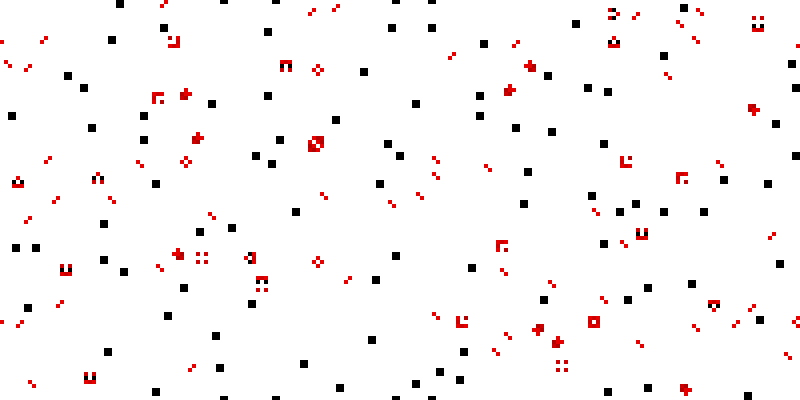A non-life-like cellular automaton
Today I give a first example of a non-life-like cellular automaton. It is a very similar beast, though: it still uses a rectangular grid with the toroidal topology, two possible states per cell, and the Moore neighbourhood, and the new state of a cell still is a function of the current states of the cell and its neighbours. However, in this automaton, it is not sufficient to know only the number of living neighbours to determine the new state of a cell.
To be specific, this automaton is very similar to B2/S23, but a dead cell comes to life iff it has precisely two live von Neumann neighbours; the survival condition still uses the Moore neighbourhood. Hence, in a sense, this automaton mixes the von Neumann and Moore neighbourhoods. Technically, though, it uses the entire Moore neighbourhood, but the birth condition cares about which neighbours are alive.
Below the ashes of this automaton (formed from a 50% random soup) is shown. It does produce a number of neat period-2, period-3, and period-4 oscillators.

Tomorrow I will give a much more interesting example of a non-life-like automaton.
